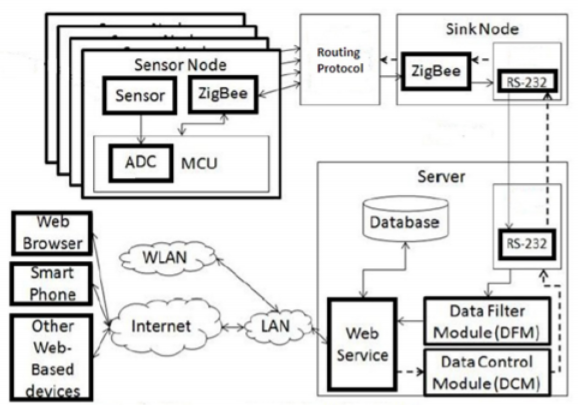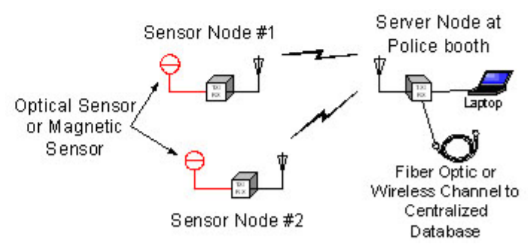Copenhagen is one of the most technologically progressive cities in the world. A multitude of smart projects are being performed today including smart parking, energy lab, and solutions lab to meet the challenges as the city’s population grows. Copenhagen aims to take the spotlight of being the world’s first carbon free city by 2025 and to completely eliminate the usage of fossil fuels by 2050. People of Copenhagen strongly appraise the social agenda of building a sustainable society, which raises motivation for developing a smart city and make way for big-scale testing of smart solutions in urban environments. This idealistic mindset has clearly been displaying for quite some time now and such thoughts are actually being put into practice in a real-life industry.
Copenhagen’s leading title for smart projects is their City Data Exchange, which is a private and public collaboration to examine the possibilities of private/public data exchange. In other words, the goal of this project is to create a platform that allows the citizens to buy, sell, and share data among themselves, institutions, and organisations/companies. This is the first time where data exchange for both private and public data will be allocated in the same place. Denmark has always been storing data about citizens, companies, and real estate for decades to digitise services across administrations and sectors, which is a key reason why they were able to plan this project more efficiently than other cities. Also, only anonymized data will be accepted in the project. The gathering and processing the data is claimed to be recovered through subscription and service fees, which would theoretically be much cheaper than the traditional method of extracting, collecting, and integrating the data by the government themselves. This project was carried out by a tech-innovative company, Hitachi, and is in collaboration with Copenhagen Municipality, the Capital Region, and CLEAN (Danish clean-tech cluster).
Hitachi developed two software applications that would demonstrate how data gathered from this project would be applied: Journey Insight and Energy Insight. Journey Insight lets users track their transportation usage, thereby helping them understand how to reduce the carbon footprint. Energy Insight lets users and businesses know how much energy they are consuming, so they can find a way to reduce the energy consumption.
Adding on to the idea of Journey Insight, the use of smart bikes can be emphasised. Primitive versions of a smart bike (e.g. Santander bikes in London) become operational after arriving at a public docking station that is spread out throughout the city and completing transaction via a bank card. These bikes are very sturdy; Puncture-resist Kevlar tyres, custom screws, full feeders, reinforced front basket, and so on. Depending on the bike company, the design of the bikes may vary, but the basic structure they share is that they consist of keypad lock, RFID reader, LED lights, GPS, and sometimes solar panels. Newer versions come with batteries, monitoring system for data analysis, motors, and server system for interacting with users through a digital platform (mobile application). Smart E-bikes in the UK encouraged many people who are usually less likely to cycle including the minority ethnic group to be more environmentally concerned, reducing the miles driven with cars by 20% during the trial stage. Considering Copenhagen is quite diverse as well at about 15% of the population being migrants, the implementation of smart bikes may turn out to be successful.
Aguiari et al.1 discusses about a prototype e-bike that analyses the pollution level in the air with the sensor attached to the bike. This sensor is connected to the user’s mobile phone and collect/share data. As the user rides the bike around the region, the system maps out the pollution with the collected data by tracking its coordinates and matching them with the pollution level accordingly. This elaborated data is then transferred to the server through the mobile phone. The sensors come equipped with GPS to add information about position with the sampling time. Users are constantly on their mobile phones, which will make the analysis of pollution efficient and the results will be updated almost instantaneously. This could lead to the development of specific bike routes across the city, taking into account the levels of air pollution, avoiding the most harmful areas and prioritising the cleanest areas. Additionally, smart phone sensors and sensors on the bike could be used to examine the user’s workout details; calorie burn, heart rate, temperature and so on. Accelerometers, tachometer, and heart rate monitors would be used. Lastly, the tracking system would show the location where the user is at, putting him or her in a safer situation in case of an accident.
One way the mapping of pollution can be improved is setting up wireless sensor network (WSN) nodes around the city for constant monitoring or the pollution level and also on the moving bikes2. The moving nodes will communicate with the stationary nodes, which will diminish the requirement and the time to complete algorithms (routing) for special connectivity. This increases the reliability and durability of the sensor nodes and data security. When a bulk of data is transferred with an imperfect algorithm, the accuracy of the information will be low. By setting up sensor nodes in this way, the readings will be more accurate without the use of complex algorithms. Figure 1 illustrates the WSN system.

Figure 1 – WSN system architecture2.
Figure 1 shows that the sensor nodes on moving bikes would collect data from the air and transmit it to the sink node, which is the base station or destination. The sink node then analyses the received data. When the bikes reach the destination, the data will be collected via Wi-Fi on the server and make it available for people to see online.
Smart parking is part of the smart campaign as well in Copenhagen. Smart parking informs drivers about the availability and the number of parking spaces. This system also gathers data on driver licence plates and provides direction to open spaces close to where the drivers want to shop in a shopping mall, increasing security measures and productivity. Smart payment systems are also employed such as e-parking and mobile communications. In Copenhagen, the system made it possible for users to access data about incidents, events, and excavation work as well. It works by the algorithm that calculates the probability of finding a parking space, which is based on manual parking counts4. This algorithm reached a maximum value of 85% and 80% accuracy on weekdays and weekends, respectively. The probability continues to increase as more data is gathered. Also, the algorithm runs via Azure cloud solution, which includes AKS cluster, Azure Database for PostgreSQL server. All data is processed and is anonymized. Figure 2 shows WSN topology that was used by Chinrungrueng et al.3 The functionality of WSN shown in Figure 2 is very similar to that of the smart bike system discussed above. Instead of pollution sensors, it would monitor traffic data. More information can be found by accessing Reference 3.

Figure 2 – WSN with a star-based topology3.
Reference
1 Aguiari, D., Delnevo, G., Monti, L., Ghini, V., Mirri, S., Salomoni, P., Pau, G., Im, M., Tse, R., Ekpanyapong, M. and Battistini, R. (2018). Canarin II: Designing a smart e-bike eco-system. 2018 15th IEEE Annual Consumer Communications & Networking Conference (CCNC).
2 Jamil, M., Jamil, M., Mazhar, A., Ikram, A., Ahmed, A. and Munawar, U. (2015). Smart Environment Monitoring System by Employing Wireless Sensor Networks on Vehicles for Pollution Free Smart Cities. Procedia Engineering, 107, pp.480-484.
3 Chinrungrueng, J., Sunantachaikul, U. and Triamlumlerd, S. (2007). Smart Parking: An Application of Optical Wireless Sensor Network. 2007 International Symposium on Applications and the Internet Workshops.
4 urbandevelopmentcph.kk.dk. (2019). Smart parking. [online] Available at: https://urbandevelopmentcph.kk.dk/artikel/smart-parking [Accessed 6 Sep. 2019].

Recent Comments